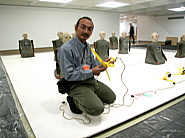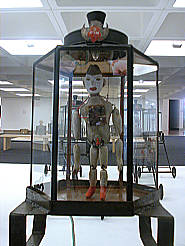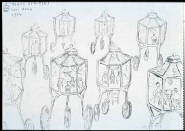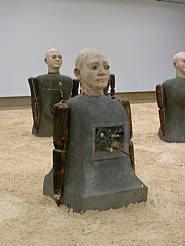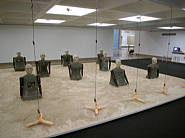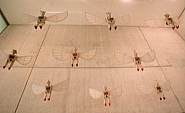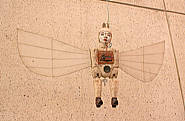| Heri DONO Indonesia b.1960 More information about the artist Ceremony of the soul 1995, Flying angels 1996 and Glass vehicles 1995 involve the repetition of doll-like figures. These figures represent the Indonesian concept of the everyman, or orang kecil (‘little man’), a concept that privileges collective identity over individual ego. Dono uses these figures to suggest the experience of individuals in mass organisations such as bureaucracies and armies. Ceremony of the soul examines the extreme powerlessness felt by ordinary Indonesians during the 32 years of Suhato’s dictatorship. Heri Dono’s figures are human in form but contain mechanical, often clockwork, components. Dono draws on Indonesian wayang puppetry, an art form that traditionally incorporates social commentary. Other sources for his figures include the Western fascination with automata and robots, which questioned the status and actions of human beings. In his works, Dono often makes use of matrix or grid-like structures. These structures have aesthetic significance in European modernist art as well as having spiritual significance in Indonesian culture in the form of the mandala. Dono also takes inspiration from Western popular culture, with Flying angels 1995 based on the animated Flash Gordon cartoons that he has loved since childhood. List of works in APT 2002 Artists and Works Print friendly version |
